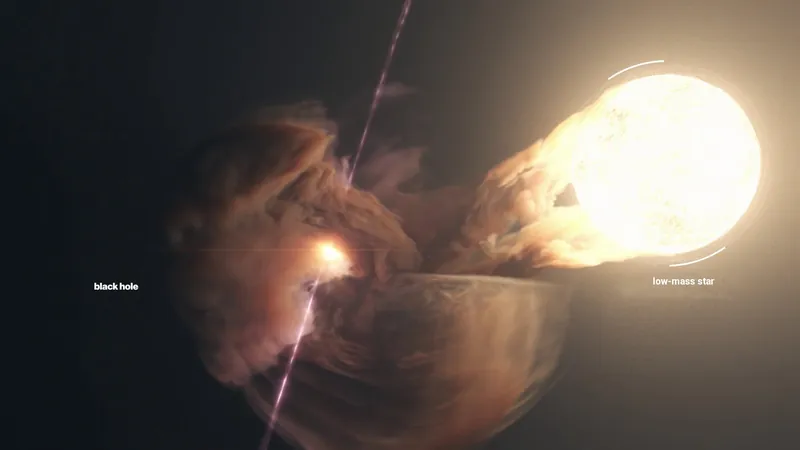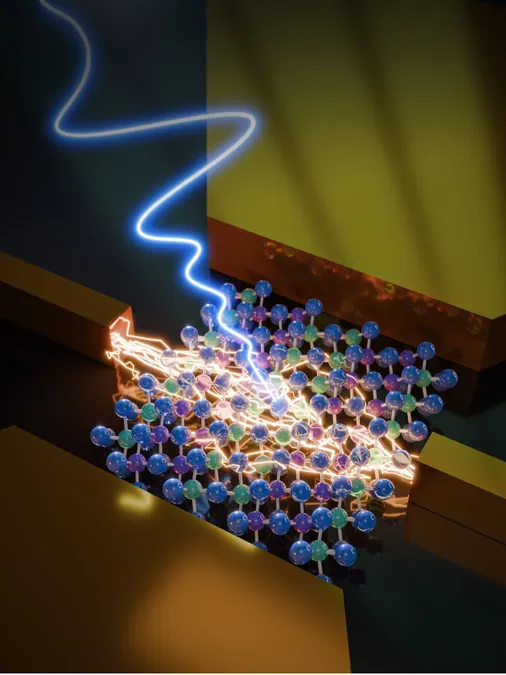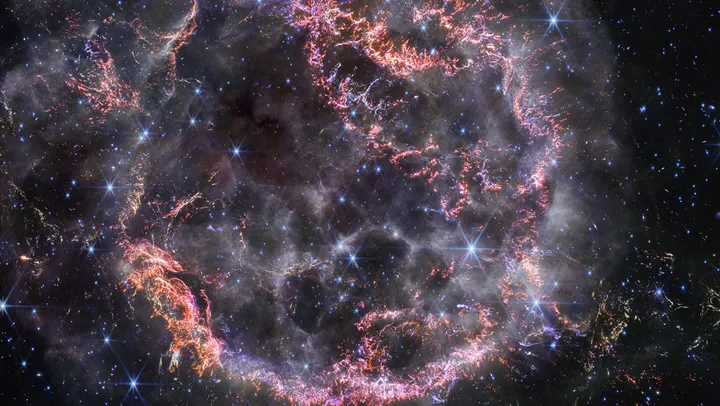
Unlocking the Secrets of Microquasars: Groundbreaking Study Reveals Their Cosmic Particle Acceleration Capability!
2025-01-29
Author: Daniel
Introduction
Earth is constantly bombarded by mysterious particles from outer space, but the fascinating truth lies not just in the dramatic meteorites that streak across our sky. Instead, it’s the tiniest cosmic components—subatomic particles like electrons and protons—that can unveil the secrets of our universe. Known as cosmic rays, these particles are some of the fastest-moving entities in existence, but their origins and acceleration methods remain shrouded in mystery.
The Mystery of Cosmic Rays
Astrophysics has long been puzzled over how the most energetic cosmic particles come to be. Black holes, with their fast-moving jets of matter, are prime candidates for particle acceleration, yet the specifics on how this occurs are elusive. Enter microquasars—extraordinary systems made up of a stellar-mass black hole paired with a normal star. As these celestial partners orbit each other, the black hole devours material from its companion, unleashing powerful jets that could be the key to unlocking this cosmic riddle.
Recent Findings
Recent studies have indicated that these microquasar jets may not only accelerate particles but could potentially contribute significantly to the cosmic ray population in our galaxy. However, until now, most of the observed particle acceleration was attributed only to high-mass microquasars. The notorious microquasar SS 433, for instance, has been identified as one of the universe’s most potent particle accelerators, with its stellar companion being roughly 10 times the mass of the sun.
Challenging Assumptions
Traditionally, low-mass microquasars were thought to lack the necessary conditions to generate gamma rays, casting doubt on whether they could also serve as effective particle accelerators. This assumption has been dramatically challenged by groundbreaking research led by Dr. Laura Olivera-Nieto from the Max-Planck-Institut für Kernphysik in Heidelberg, Germany, and Dr. Guillem Martí-Devesa from the Università di Trieste, Italy. Their findings, published in The Astrophysical Journal Letters, could reshape our understanding of these enigmatic celestial phenomena.
The Role of GRS 1915+105
The researchers meticulously analyzed 16 years of data gathered by NASA’s Fermi Large Area Telescope, revealing a faint gamma-ray signal linked to GRS 1915+105, a microquasar hosting a star that is smaller than our sun. This revelation, characterized by gamma-ray energies exceeding 10 GeV, suggests that this microquasar is indeed capable of accelerating particles to unprecedented energy levels.
Implications of the Study
The implications of these findings are enormous. The study posits that protons are accelerated within the jets of such microquasars, escaping and interacting with surrounding gas to create gamma-ray photons. Complementing their research, data from Japan’s Nobeyama 45-meter radio telescope confirmed that sufficient gas is present around GRS 1915+105 to support this particle acceleration theory.
Future Directions
This discovery opens the door to extraordinary possibilities; low-mass microquasars, which make up the majority of these systems, may significantly contribute to the cosmic rays permeating our galaxy. However, to fully grasp the nuances of this phenomenon and why certain microquasars excel in particle acceleration while others do not, further detections and multi-wavelength observations will be critical.
Conclusion
In conclusion, this transformative study challenges long-held assumptions about microquasars and their role in the cosmos. As scientists delve deeper into the universe's hidden wonders, who knows what other revelations await us in the invisible web of cosmic rays? Stay tuned for more groundbreaking discoveries that could redefine our understanding of the universe!



 Brasil (PT)
Brasil (PT)
 Canada (EN)
Canada (EN)
 Chile (ES)
Chile (ES)
 Česko (CS)
Česko (CS)
 대한민국 (KO)
대한민국 (KO)
 España (ES)
España (ES)
 France (FR)
France (FR)
 Hong Kong (EN)
Hong Kong (EN)
 Italia (IT)
Italia (IT)
 日本 (JA)
日本 (JA)
 Magyarország (HU)
Magyarország (HU)
 Norge (NO)
Norge (NO)
 Polska (PL)
Polska (PL)
 Schweiz (DE)
Schweiz (DE)
 Singapore (EN)
Singapore (EN)
 Sverige (SV)
Sverige (SV)
 Suomi (FI)
Suomi (FI)
 Türkiye (TR)
Türkiye (TR)
 الإمارات العربية المتحدة (AR)
الإمارات العربية المتحدة (AR)